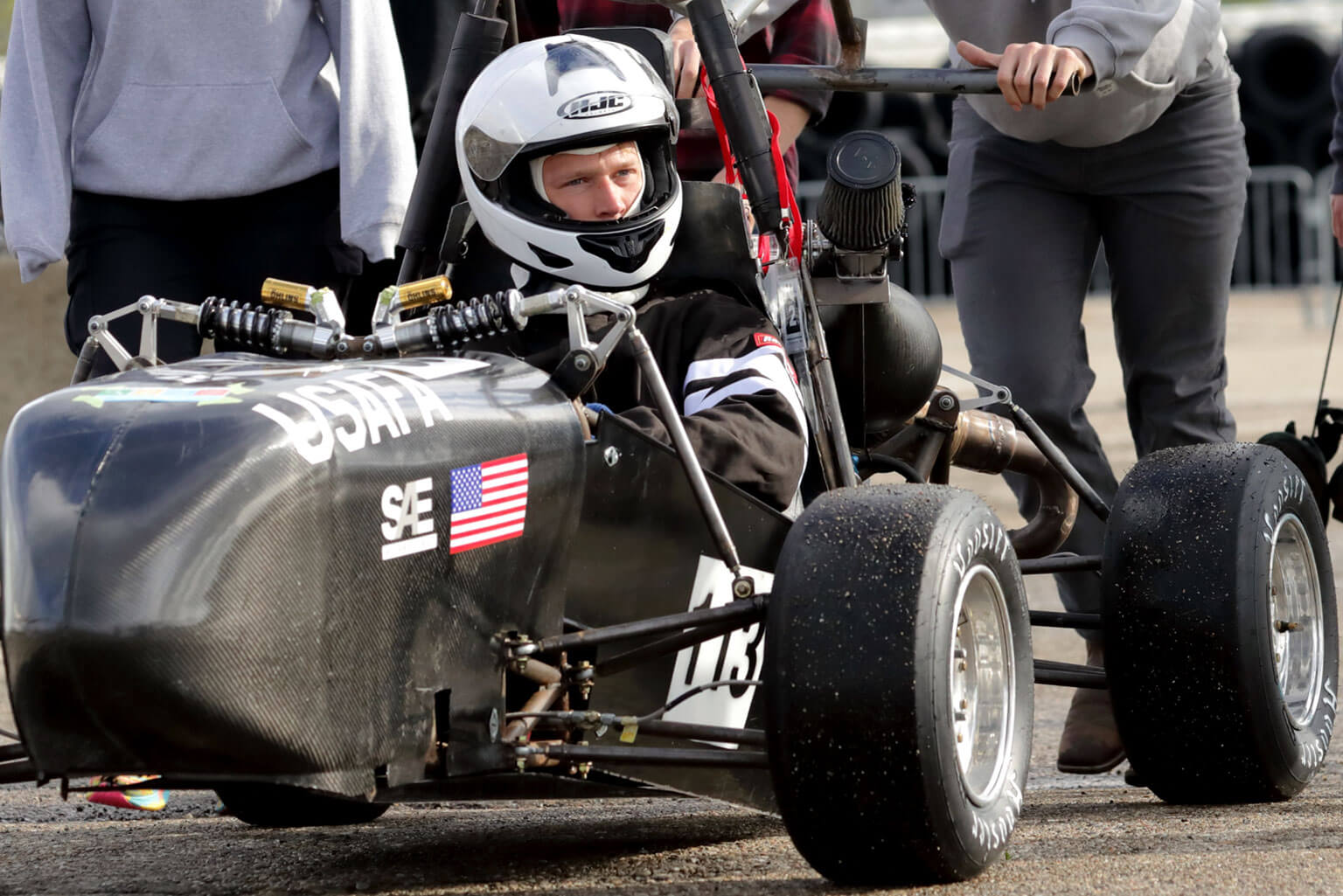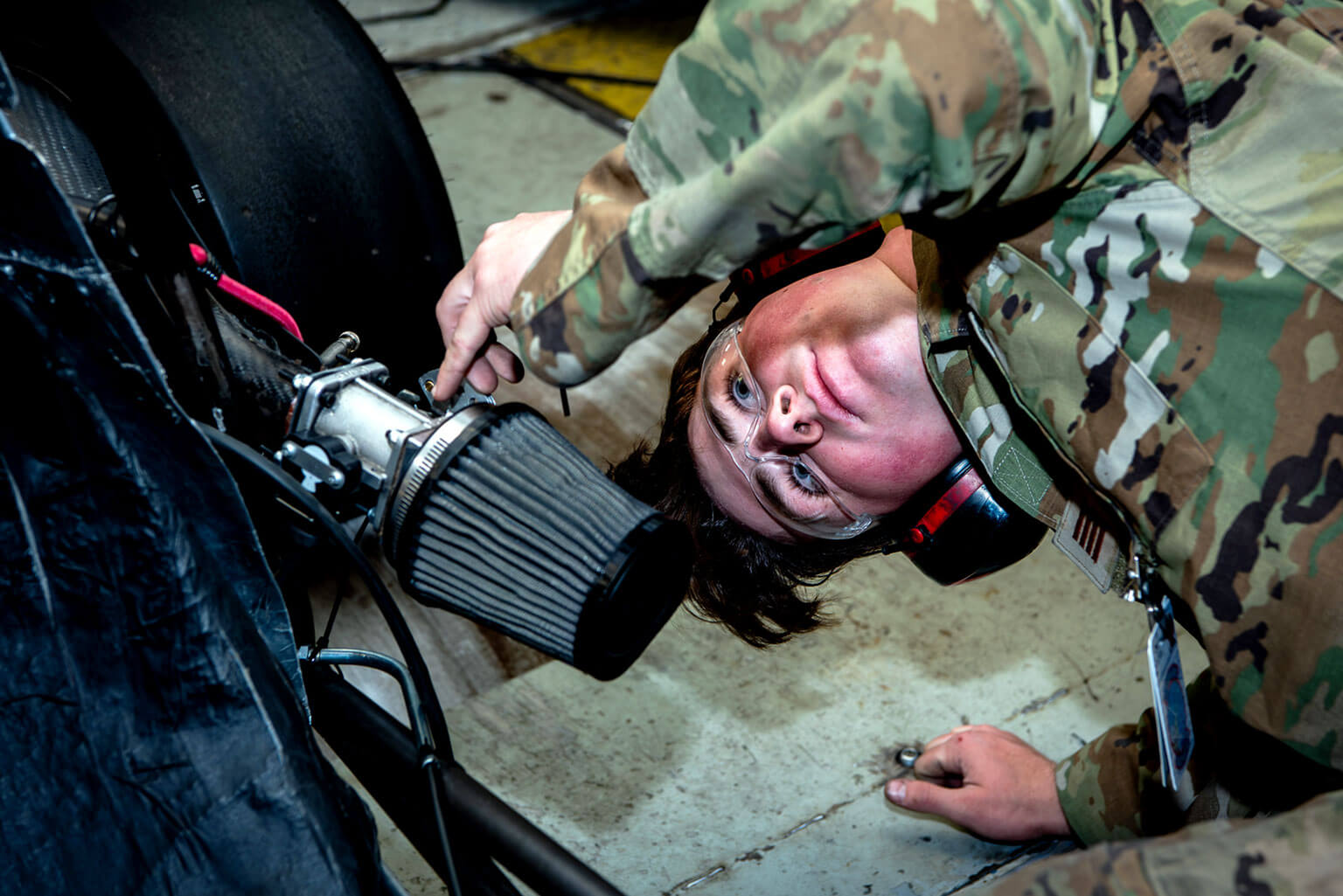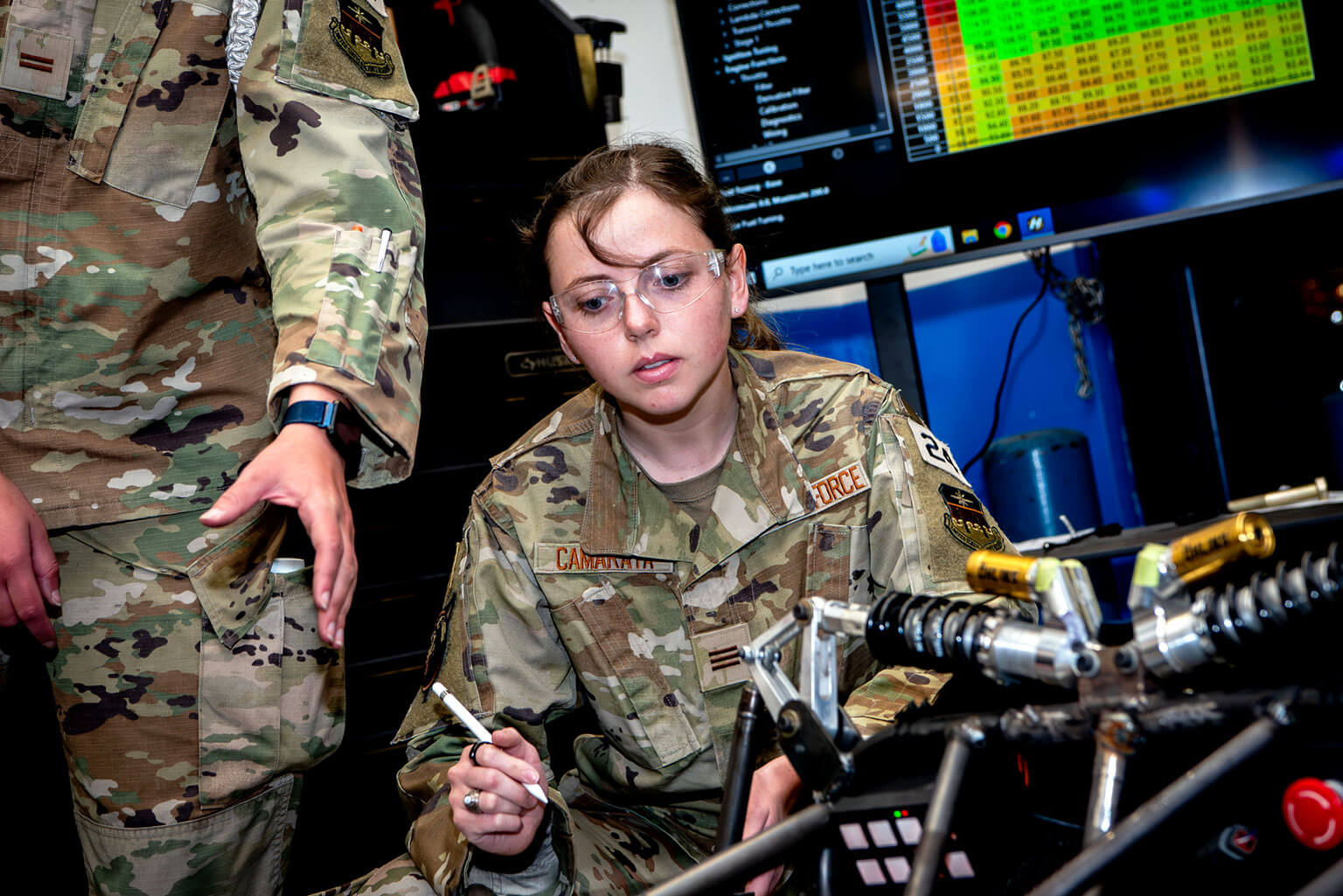Capstone team takes formula-style car to international competition

2nd Lt. (then Cadet 1st Class) Jacob Muscato prepares to head out for the final endurance race in the Formula Society of Automotive Engineering car at Michigan International Speedway in Brooklyn, Michigan, May 11, 2024. He was part of the first U.S. Air Force Academy team to finish the almost 14-mile race in seven years. (Courtesy photo provided by Dr. Ioan Feier)
By Randy Roughton
U.S. Air Force Academy Strategic Communications
U.S. AIR FORCE ACADEMY, Colo. – The U.S. Air Force Academy’s only cadet-designed and built human-raced vehicle capstone finished an impressive 69th out of a field of 108 cars in international competition in Michigan.
Eleven senior cadets on the Department of Mechanical Engineering capstone team took their Formula Society of Automotive Engineers car to the competition at Michigan International Speedway in Brooklyn, Michigan, May 8-11.

2nd Lt. (then Cadet 1st Class) Arden Taylor adjusts the intake throttle body attached to a custom carbon fiber plenum with an integral restrictor on the Formula Society of Automotive Engineers car April 29, 2024. The U.S. Air Force Academy Department of Mechanical Engineering cadet capstone team competed in an international competition at Michigan International Speedway in Brooklyn, Michigan, April 8-11, 2024. (U.S. Air Force photo by Justin Pacheco)
Laying the foundation to become future industry leaders
As the only undergraduate team in the competition, the cadets faced much larger teams as well as those with considerably more funding, said 2nd Lt. (then Cadet 1st Class) Jacob Muscato.
“The FSAE competition in Michigan is a challenging event where the brightest future automotive engineers from top global universities display their technical skills,” Muscato said. “This sets the stage for these engineers to become leaders in the industry. Our completion of the entire series of races at the competition is an accomplishment some nationally ranked mechanical engineering departments couldn’t achieve. Hopefully, this positions the U.S. Air Force Academy for success as a top competitor in the next 5 to 10 years.”
The mechanical engineering cadet team
The department has sent teams to the competition for two decades. However, this was the first Academy team to compete since the COVID-19 pandemic, said team advisor and Department of Mechanical Engineering associate professor Dr. Ioan Feier.
The mechanical engineering team’s nucleus formed around seven senior cadets: Muscato and fellow 2nd Lts. (then Cadets 1st Class) Nicole Block, Camryn Camarata, Mark Diers, Max Heupel, Arden Taylor and Colton O’Dell. Four underclassmen—current Cadet 1st Class Nathaniel Bone, Cadet 2nd Class Joseph Klosiewicz, Cadet 1st Class Thomas Radujko and Cadet 2nd Class Antonio Tornese—also contributed to the two-semester project.
“The team represented the Academy well,” Feier said. “They arguably had one of the closest experiences cadets can have to the actual designing, building, testing, operation and quick-sortie generation of a small weapon system before becoming officers.”
Preparing in the Applied Mechanical Laboratory
The week before the competition, Muscato, O’Dell and Taylor averaged 12 hours a day working on the car in the Applied Mechanical Laboratory automotive section. The work is highly stressful. Additionally, any single component failure during the race could disqualify a team. Before the race, teams are judged on technical specifications, design, cost, marketing and the car’s acceleration, endurance, fuel efficiency and noise level, Feier said.
The FSAE competition challenges students to conceive, design, fabricate and compete with small formula-style racing cars, Feier said. Teams spend between 8 and 12 months designing and building their vehicles. The Academy team had about eight months or two semesters. They spent considerable time to ensure top performance, safety measures and testing in high-tempo, high-stress environments.

2nd Lt. (then Cadet 1st Class) Camryn Camarata notes the Formula Society of Automotive Engineers car performance during testing April 29, 2024. The U.S. Air Force Academy Department of Mechanical Engineering cadet capstone team competed in international competition in Michigan, April 8-11, 2024. (U.S. Air Force photo by Justin Pacheco)
Taking an integrated approach
“The Formula SAE Capstone Team spent countless hours preparing for the competition,” Camarata said. “As a Systems Engineering major, I utilized my education of human factors integration and project management to assist the team. It was amazing to actually practice what I learned in the classroom on this project. This project helped me understand mechanical engineering and automotives better. As a pilot trainee selectee, I’ve gained more respect for maintainers and engineers. So much knowledge and precision is required to build and maintain this car. I cannot imagine what is needed for a plane!”
See more Mechanical Engineering cadet capstone photos on Flickr.